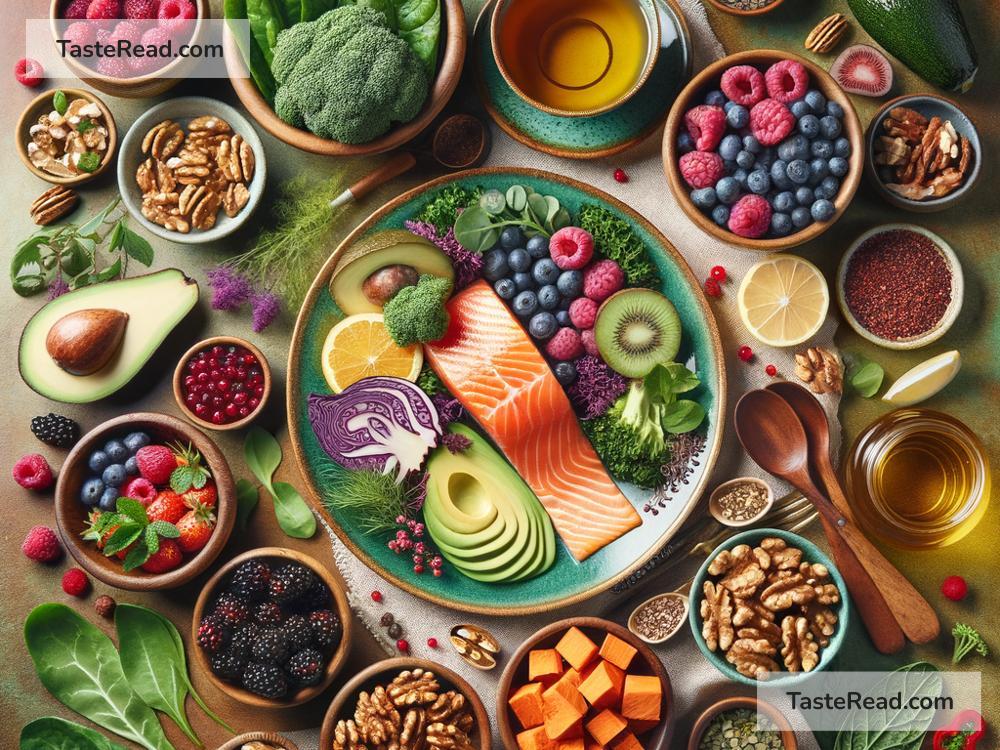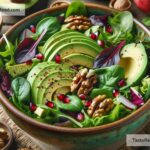Foods for Improving HPA Axis Regulation: Nourish Your Stress Response System
Our bodies are fascinating machines with systems that work together to keep us healthy and balanced. One of these systems is the HPA axis. The HPA axis, short for the hypothalamic-pituitary-adrenal axis, is like a control center that helps your body respond to stress. When you’re stressed, this system kicks into gear to release hormones like cortisol—the “stress hormone.” While this is helpful in the short term, chronic stress can throw the HPA axis out of balance, leading to exhaustion, burnout, or health issues.
The good news? What we eat can influence how well our HPA axis functions. By choosing the right foods, we can support and regulate this vital system, helping our body respond to stress in a healthier way. In this article, we’ll explore foods that nourish the HPA axis and improve stress resilience, all in simple terms.
Why Does the HPA Axis Need Support?
When the HPA axis gets overworked due to chronic stress, it can lead to problems like fatigue, poor sleep, anxiety, and hormonal imbalances. Imagine if a car engine is running non-stop—it will eventually overheat. The same can happen to you when your HPA axis is under constant pressure.
Supporting HPA axis function starts with managing stress in your daily life, but what you eat also plays a huge role. Nutrients from food can help your brain, adrenal glands, and the hormonal system stay balanced, strong, and resilient.
Foods That Support HPA Axis Regulation
Let’s dive into the best foods for improving HPA axis function, and why they work!
1. Protein-Rich Foods for Stability
Protein is essential for keeping your energy levels steady and building hormones that are critical for the HPA axis. The amino acids found in protein-rich foods help repair and maintain healthy brain and adrenal gland function, which are key components of the HPA axis.
Examples of protein-packed choices:
– Eggs
– Chicken and turkey
– Fish like salmon or sardines (rich in omega-3 fatty acids too!)
– Nuts and seeds, such as almonds and sunflower seeds
– Legumes like lentils and chickpeas
2. Healthy Fats for Hormonal Support
Your body needs healthy sources of fat to create hormones like cortisol, which are regulated by the HPA axis. Omega-3 fatty acids found in certain foods also support brain health and reduce inflammation, helping the HPA axis work more effectively.
Top picks for healthy fats:
– Avocado
– Fatty fish (salmon, mackerel, tuna)
– Walnuts, chia seeds, and flaxseeds
– Olive oil and coconut oil
3. Foods Rich in Magnesium
Magnesium is a superstar mineral when it comes to stress support. It helps calm the nervous system and regulates cortisol production. Many people don’t get enough magnesium, so adding magnesium-rich foods to your diet can make a big difference.
Magnesium-rich choices:
– Dark leafy greens (spinach, kale, swiss chard)
– Pumpkin seeds
– Dark chocolate (just make sure it’s 70% or higher cocoa content for less sugar)
– Bananas
– Almonds and cashews
4. Vitamin C-Rich Foods for Adrenal Health
Your adrenal glands, which are part of the HPA axis, use a lot of vitamin C to produce stress hormones. Supporting them with vitamin C-rich foods can help prevent burnout and keep your adrenal glands functioning well.
Vitamin C food sources:
– Oranges, grapefruit, and other citrus fruits
– Bell peppers
– Strawberries
– Broccoli and Brussels sprouts
5. Complex Carbs for Balanced Energy
Complex carbohydrates provide a steady release of energy and help regulate blood sugar levels. Stable blood sugar is critical because blood sugar spikes and crashes can put extra strain on the HPA axis.
Best complex carb options:
– Sweet potatoes
– Oats
– Brown rice and quinoa
– Whole-grain bread
– Beans and lentils
6. Adaptogenic Foods and Herbs
Adaptogens are natural substances that help your body adapt to stress and improve HPA axis function. Some foods and herbs have adaptogenic properties, meaning they can help your body get back to balance after being exposed to stress.
Popular adaptogens:
– Ashwagandha (often in tea or supplements)
– Maca root (can be added to smoothies)
– Holy basil (Tulsi tea)
– Ginger and turmeric
7. Hydrating Foods for Stress Reduction
Dehydration can worsen stress and negatively affect the HPA axis. Make sure to hydrate with water-rich foods and herbal teas that have calming effects.
Examples of hydrating foods:
– Cucumber
– Watermelon
– Celery
– Herbal teas like chamomile or peppermint
Final Tips for HPA Axis Health
Improving your HPA axis function isn’t just about eating the right foods. Lifestyle changes like getting enough sleep, exercising in moderation, and managing your stress through relaxation techniques (like yoga or meditation) are also important. Think of it as giving your whole system the care it needs!
Eating a diet rich in whole, nutrient-dense foods can regulate your stress response, strengthen your HPA axis, and help you find balance. Focus on adding colorful fruits, vegetables, protein, healthy fats, and adaptogenic herbs to your meals, and remember that small changes add up over time.
Supporting your HPA axis is a gift to yourself, allowing your body to handle stress more smoothly and live a healthier, calmer life. So, next time you’re planning your grocery list, include some of these nutritious foods and take one step closer to feeling your best. Your body will thank you!


